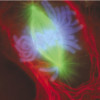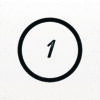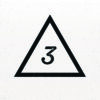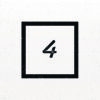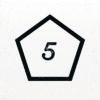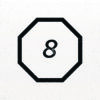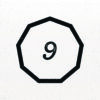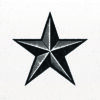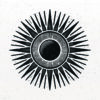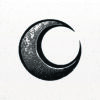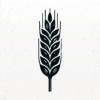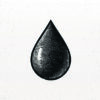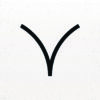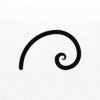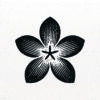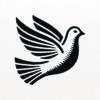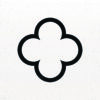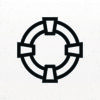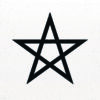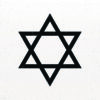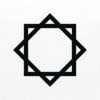Two
2

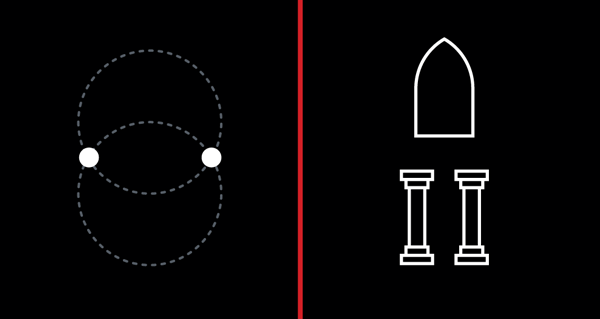
- Digital Illustration by Ben Crowder “By Water and by Fire”
- Digital Illustration by Ben Crowder “Opposition in All Things”
- The new Rome temple features curved sides that imply the vesica piscis
- Christ in a vesica piscis = rebirth
- Payson 2nd Ward Exterior, from ldsarchitecture.wordpress.com
- An image of a newt lung cell stained with fluorescent dyes undergoing mitosis, specifically during early anaphase, via Wikipedia
Covenants
The Hebrew word covenant as we read in the Old Testament is: briyth (ber-eeth). It means: to cut, ‘from ‘barah’ (1262) (in the sense of cutting (like ‘bara” (1254); a compact (made by passing between pieces of flesh) (Strong’s Condordance). Thus by dividing something new is created, separateness becomes apparent, opposites, choice, and consequences come into existence. Creation through division happens in the creation account in Genesis:
- “divided the light from the darkness.” (Genesis 1:4)
- “divide the waters from the waters” (vs.6)
- Division of living from non-living with the introduction of plant life which would include cell replication through division (vs.11)
- “divide the day from the night” (vs.14)
- Animal life was divided from the seas and the earth (vs.20-21)
- Woman is divided from the man, but they are considered one flesh (Genesis 2:21-24)
We have other examples of covenant creation through division:
- God makes a covenant with Abram by passing in-between the divided carcasses of several animals. (Genesis 15:7-18)
- Moses divides the Red Sea and Israel passes between the halves. (Exodus 14:21,22)
- The Jordan river parts and Israel passes between the halves. (Joshua 3:16,17)
- Elijah and Elisha pass through divided water on dry ground. (2 Kings 2:8-13)
- Joel speaks of “rending your hearts.” (Joel 2:13)
- “And I will give the men that have transgressed my covenant, which have not performed the words of the covenant which they had made before me, when they cut the calf in twain, and passed between the parts thereof,” (Jeremiah 34:18)
- Veil of the Temple divided at Jesus’ crucifixion. (Matthew 27:50,51)
- Captain Moroni and several Nephites rend their garments in token of a covenant. (Alma 46:12-21)
- Mount of Olives to divide allowing an escape for Israelites in the last days. (Zechariah 14:4)
- In the modern LDS sacrament ordinance, bread is divided in token of a covenant.
For more information see: Cut a Covenant
Creation
“With two, number begins.”
Robert Lawlor, “Sacred Geometry Philosophy and Practice,” 20
“One and two are considered the parents of numbers, not really numbers themselves. And they give birth to the digits three through nine, in other words, trinity to the trinity of trinities. And with that and zero you can create – everything.”
Michael Schneider, Oral Interview, via YouTube
Law
“There was nothing in the ark save the two tables of stone, which Moses put there at Horeb, when the Lord made a covenant with the children of Israel, when they came out of the land of Egypt.”
1 Kings 8:9
Man + Woman
See “Creation”
Opposition
“The [vesica piscis] emphasized difference. It foreshadows the world’s apparent boundaries, conflict and echoes our own sense of separation. Opposites appear when separateness begins.”
Michael Schneider, A Beginner’s Guide to Constructing the Universe, 36
Portal (eye, mouth, sound, etc.)
“[The vesica piscis] is thus associated with the number 2 and the principle of complimentary opposition (creation), polar opposition, and the law of witnesses. This shape resembles the openings in the human body, including the eye, a doorway for light…In an LDS temple context, the ordinances of the temple may bridge the 2 worlds symbolized by the vesica pisces, that of the living and the dead.”
Val Brinkerhoff, “The Day Star: Reading Sacred Architecture” (Book 2), 67
Witnesses
Two pillars may symbolize witnesses such as Boaz and Jachin, two pillars which stood in the porch of Solomon’s Temple.
- Digital Illustration by Ben Crowder “By Water and by Fire”
- Digital Illustration by Ben Crowder “Opposition in All Things”
- The new Rome temple features curved sides that imply the vesica piscis
- Christ in a vesica piscis = rebirth
- Payson 2nd Ward Exterior, from ldsarchitecture.wordpress.com
- An image of a newt lung cell stained with fluorescent dyes undergoing mitosis, specifically during early anaphase, via Wikipedia










